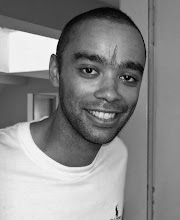The starting question is to whom I could recommend this camera in the recent digital era? Let me answer this trough my own example; If you are not hesitant anymore of your choice, skip this section and jump to the next part.
I got my first camera (meaning the first which I really started to use) as a graduation present from my friends in the winter of 2006. It was a Nikon F65. The art of creation suddenly had taken me, I was hooked. But I was not satisfied with my camera; I wanted to have a bigger, a better, a more fancy one. I honestly believed that the more expensive the camera is, the better pictures I could make. I owned a Nikon F/N80, D40 and tried F100, D80, but did not get engaged with any of these.
But as my own style had slowly evolved at last I knew more precisely what I needed. I mostly shot portraits in wide variety of environments. For that I needed a light, portable, yet a sturdy, reliable, and affordable camera. Since I had become familiar with Nikon's ergonomics and gears, I wanted to stick to the brand. I also realized that for me photography was not just a technical hobby, but, rather, a way of self-expression and therefore I wanted to control the whole process; I wanted to be involved in those moments from taking the pictures until developing the final print in the darkroom. I was also very sensitive for the tonal transition of the photos, since almost exclusively I shot in b&w. Because of these reasons digital was quickly out. And, above all, I realized that I needed such a camera that 'stays out of the way'; Which does not distract my attention, but lets me to be fully involved with the scene, with the model, with that other human being whose essence I try to transform into a picture.
Then somewhere I red about the Nikon FM2(n). Somehow it felt the right one; Quickly I gathered all information I could, and ordered one through ebay. Recently (as of 2008) one can get an FM2n for less than 400$ in perfect, almost new condition, and for less than 200$ in an adequate shape. And what do you get for this money? Such features in a tightly-built body that match or exceed even the high end competitors of the mechanical camera market (e.g., Leica MP for more than ten times the money...): shutter speed up to 1/4000sec.+B, flash sync speed up to 1/250sec., ASA/ISO values between 12-6400, multiple exposure option, self-timer, depth of field (DOF) preview, consistent center-weighted exposure meter, compatibility for wide range of Nikon lenses, and...the myth.
 When mine arrived I just knew: this was it. The camera is just a tool, of course. But one has to be deeply accustomed to the tool, for using it properly. Some feature (or a lack of that) might be weakness for someone, while for someone else it perfectly fits to his/her idea of creation and enchants his/her artistic power.
When mine arrived I just knew: this was it. The camera is just a tool, of course. But one has to be deeply accustomed to the tool, for using it properly. Some feature (or a lack of that) might be weakness for someone, while for someone else it perfectly fits to his/her idea of creation and enchants his/her artistic power.It is purely mechanical, one of the most reliable cameras Nikon has ever made. And it is small - especially with the prime lens I use. It means that you can carry everywhere and in action it does not separate you from your model as much as, e.g., a bulky F100, not to talk about the F5... It might means more intimacy, which can be present in the picture.
So, do you want to do it slowly, letting the scene fully penetrating your-self through your senses? Do you want to have a decent small camera which does not draw too much attention, thus disturbs the original scene as least as possible? Do you need to carry it along in cold or remote areas, often without available power supply? Do you want to keep distracting things at the minimum and let your mind work in and with the details of the 'real scene'? Are all these important for you? Then go for it! :)

2 comments:
Hi, how much did you pay for the FM2?
You see, here in SE Asia the most common price for an adequately functioning FM2 is around 150 usd, and that too for the body only. I think it is fair pricing.
Post a Comment